Potential exists to expand production of important cultured fish species
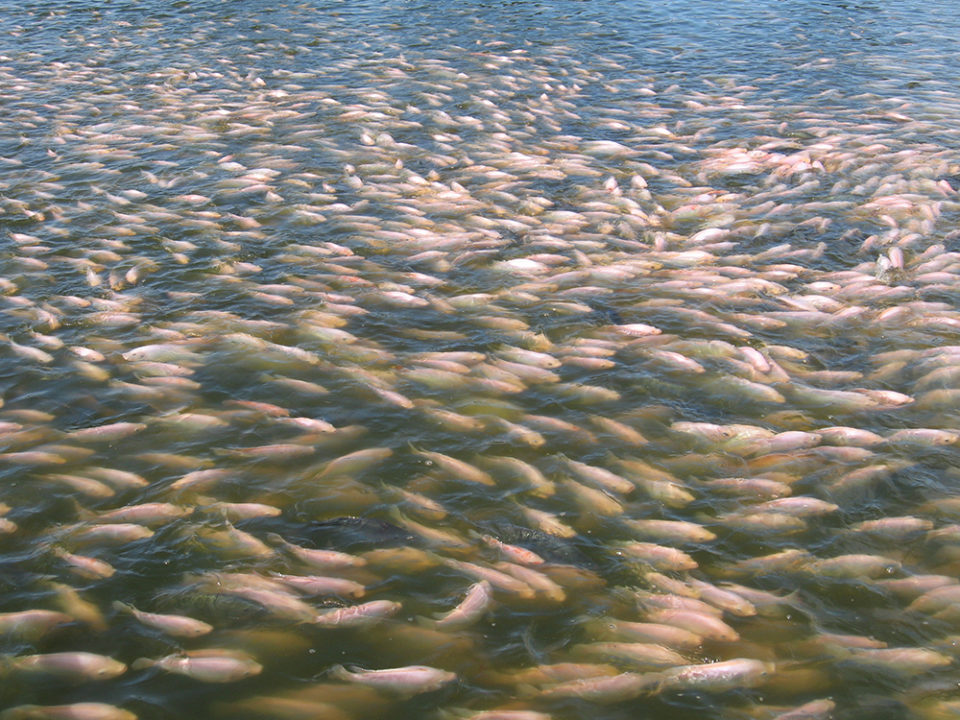
Globally, most tilapia farming is carried out in fresh and low salinity waters. However, the high degree of tolerance to seawater shown by some hybrids shows that their culture in high-salinity brackish and seawater is possible. This would open many tropical and arid coastal areas to tilapia production and could significantly expand global production of this important species group.
Overfishing of wild fisheries stocks is common in many areas, and it is unlikely that traditional capture fisheries in these regions can expand or even be sustained. Tilapia culture would be an attractive alternative to increase fish production by incorporating marginal lands and coastal areas into a productive activity.
Several methods have been used for tilapia saltwater culture, including earthen ponds, tanks and pools, hapas, cages and recirculating tank systems. These have been implemented at both experimental as well as in commercial operations in the Caribbean (Jamaica, Puerto Rico, Mexico, Ecuador), Asia (Taiwan, Thailand, Philippines) and various Northern Africa and Middle East countries (Kuwait, Saudi Arabia, Egypt).
Saltwater culture of tilapia
Some of the early efforts to culture tilapia in saltwater include pioneering studies carried out in Hawaii in the late 1950s, trying to develop intensive tank culture methods for Oreochromis mossambicus that could be used as baitfish for the local tuna fishing industry. At the same time, small-scale experiments in aquaria, concrete tanks and ponds were being conducted in Israel, to determine the adaptability of O. aureus and Tilapia zillii to seawater.
Concurrent studies evaluated developing salt marshes and desert saline waters for fish culture. Results showed that O. aureus and O. niloticus could be cultured in low salinity brackish waters, between 3.6 and 14.5 ppt. Following these early studies, it was not until the mid-1980s when saltwater tilapia culture again received significant attention. This was due to the discovery of superior strains and species for culture, and increasing awareness of their potential for widespread culture in arid and coastal areas.
Currently, various countries are implementing tilapia seawater culture, adding to their traditional shrimp production lines, not with the intention of substituting shrimp production but to provide a feasible alternative to underutilized infrastructure (due to shrimp diseases) and to control undesirable algal blooms.
Red tilapias are suitable for brackish water and seawater culture because of the salinity tolerance of the parental species, known to be moderately (O. niloticus and O. aureus) to highly euryhaline (O. mossambicus and O. hornorum). Several tilapias can be successfully acclimated to seawater if the process is gradual. Reproduction, salinity and temperature acclimation are the main areas of concern when evaluating suitability of a tilapia for seawater culture. For example, one important limitation in subtropical areas is poor cold tolerance, which hampers production during the winter and is exacerbated under high salinities.
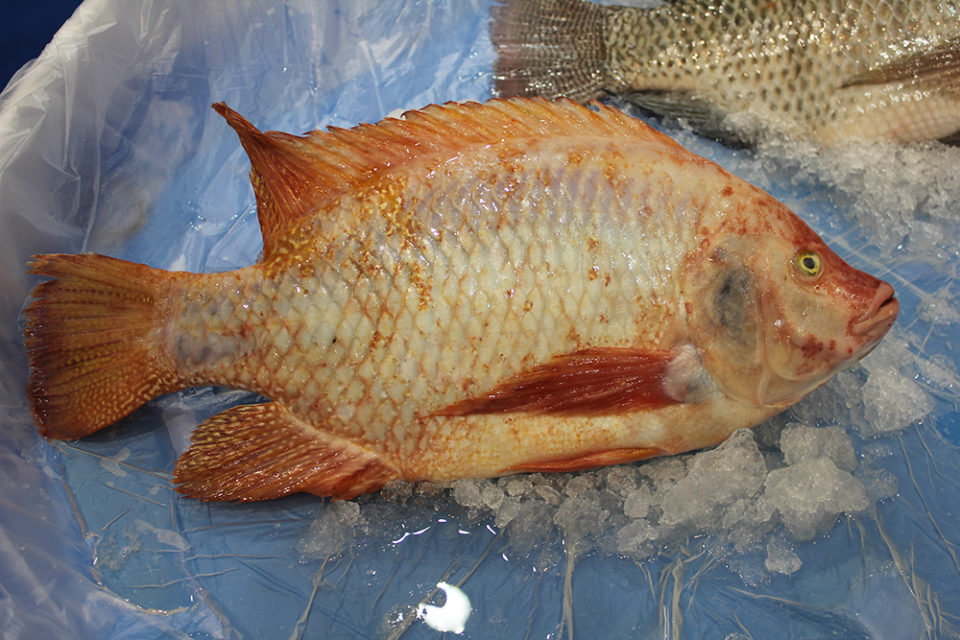
Environmental concerns
The introduction of tilapias into marine waters and the potentially adverse ecological effects can limit the commercial development of saltwater tilapia culture. Certain tilapias are very tolerant of salty conditions. For example, the Mozambique tilapia (O. mossambicus) can adapt to salinities as high as 120 ppt, grow in ponds at salinities from 32-40 ppt, and reproduce at salinities as high as 49 ppt.
Tilapias have been introduced extensively to areas near the coast. For example, in Florida, O. mossambicus occur in shallow estuarine waters, coastal lagoons and canal systems. In California O. mossambicus and Tilapia zillii were found in a flow control canal and a coastal lagoon with salinities as high as 34.5 ppt. In Hawaii, O. mossambicus, T. zillii and T. melanopleura inhabit coastal estuaries. In the Caribbean, the Mozambique tilapia was introduced to Puerto Rico in 1958 by the Puerto Rico Department of Agriculture to control algae in sugar cane irrigation canals; it is now widely distributed throughout the island. In Africa, O. mossambicus occurs in coastal lagoons and estuarine areas that are not connected to the sea for most of the year, but is not found in open estuaries strongly affected by tides and currents and where rapid salinity fluctuations occur.
The absence of reports documenting the incidence of tilapia in open marine waters strongly suggests there are ecological constraints preventing their widespread colonization of coastal marine waters. This despite their high salinity tolerances, the direct accessibility of open coastal marine waters through rivers, canals and estuaries, and the long time since their initial introduction to many areas. Several factors have been discussed to explain their absence in open estuaries. For example, O. mossambicus can adapt to a gradual change in salinity but cannot tolerate the rapid salinity fluctuations of most open estuaries, and it avoids strong water currents that cause substrate movement and hampers nesting and reproduction. Available evidence indicates that the potential of tilapias for colonization of open marine waters is low.
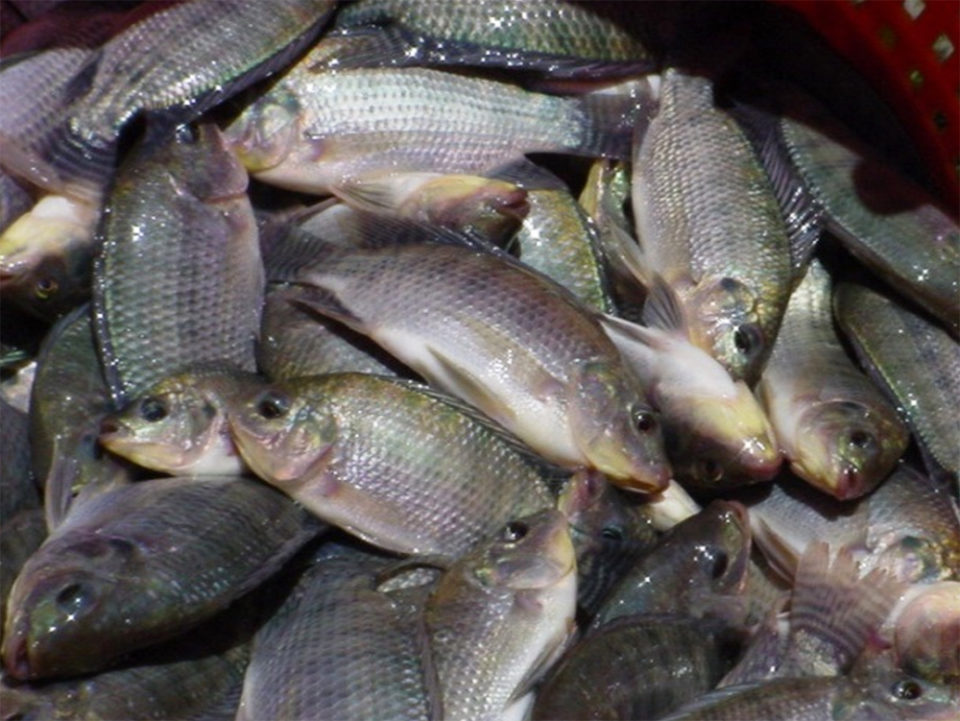
Parasites
The susceptibility to infection by marine parasites is a potential constraint to commercial seawater culture of tilapia. One example is the flatworm (Neobenedenia melleni), which attach to the sides, head and eyes of fish and feed on mucus and epithelium, causing external lesions, blindness and exposing the dermis to secondary infections of bacteria, viruses and fungi, eventually killing the fish.
Symptoms of parasitosis on tilapia reported from Florida, the Caribbean and Hawaii include reduced feeding, frayed fins, resting on tank bottoms, hyper production of skin mucus, exophthalmia and corneal opacity. In addition, infections by these worms can cause disoriented swimming behavior, epidermal hyperplasia, exophthalmia and pale livers.
Several chemicals have been reported effective against these parasites. Formalin has been frequently used in the treatment on Jamaican red tilapia (Oreochromis spp.). A treatment of 60 mg/liter formaldehyde for 30 seconds reportedly dislodged the worms and the fish recovered after transfer to a parasite-free environment. Potassium permanganate has also been used at concentrations of 0.25 to 1.0 mg/liter for 10 minutes to kill juvenile and adult monogeneans. Other chemicals used to treat monogeneans infections in fish include copper sulfate, mebendazole, paraziquantel and benzocaine, although their specific effects on treatment of N. melleni infections in tilapias have not been examined. Using chemical treatments to treat fish in commercial-scale production operations is often not feasible or recommended because of high cost; potentially harmful effects to consumers and the environment, governmental restrictions and other factors.
Market acceptability
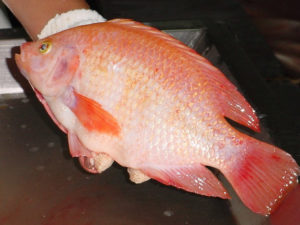
It is likely that various social factors have prevented greater market acceptability of several freshwater fishes in many areas of the world, including the most common varieties of tilapias. A good example is Mozambique tilapia (O. mossambicus), because the dark coloration and often muddy flavor of wild caught O. mossambicus often makes it a low-priced species.
Red tilapia hybrids grown in saltwater systems could generate a more acceptable product, as various market evaluations have shown that a reddish color is very important in initial customer acceptance. These red hybrids are fast growers and efficient feed converters, and are popular in many areas because they look like some of the well-established marine species, including the sea bream (Chrysophrys major) and the red snapper (Lutjanus campechanus).
In surveys conducted in Puerto Rico in the mid-1990s, most restaurant managers indicated that red, saltwater-cultured tilapia could be used to prepare a product of similar or better taste and presentation than silk snapper (Lutjanus vivanus), and the price per serving for whole fish paid by restaurant customers was reportedly similar for both species. Results also indicated the need for a more market-oriented name that reduced the association with wild caught tilapia, improving product promotion and capitalizing on cultural preferences for red over dark-colored fish. Undoubtedly, much work remains to be done regarding marketing and product promotion, but the prospects are excellent.
Optimizing salt tolerance
Cnaani et al. (Global Aquaculture Advocate, Nov-Dec 2011) discussed various approaches to optimize salt tolerance in tilapia, including optimizing acclimation protocols and adding salt to the diet. Salt tolerance be improved by selective breeding. Salt-tolerant strains can be produced – using existing variations within and among species -– by hybridization between salt-tolerant ones like Mozambique tilapia with fast-growing but less salt-tolerant species like Nile tilapia. Studies suggest that substantial additive genetic variance exists for growth rate and survival in saline environments, which can be used in selective breeding programs. And the use of modern molecular biology techniques and genomic approaches can be used to identify genes that encode specific proteins active in salt-tolerant species that are lacking or less active in less-tolerant species, or specific proteins that are induced under salt stress.
These authors also proposed two routes for improving salinity tolerance. One is through biochemical pathways and gene networks involved in osmoregulation, to better understand the salt tolerance phenotype and the genotypic background. The other route is by screening natural and domesticated populations for genetic variations in biochemical pathways for phenotypic differences. This information can be used for selective breeding programs of those tilapia populations with appropriate performance in saline waters.
Perspectives
Tilapia culture is carried out mostly in freshwater and low-salinity brackish water systems around the world. However, the high degree of salt tolerance exhibited by certain species, ongoing research to improve salinity tolerance, and various production studies conducted in many areas indicate that these fishes can be commercially produced in seawater. Developing tilapia culture in tropical and arid coastal areas of the world – where there are few alternatives for more traditional food production activities – could significantly increase tilapia production.
Now that you've reached the end of the article ...
… please consider supporting GSA’s mission to advance responsible seafood practices through education, advocacy and third-party assurances. The Advocate aims to document the evolution of responsible seafood practices and share the expansive knowledge of our vast network of contributors.
By becoming a Global Seafood Alliance member, you’re ensuring that all of the pre-competitive work we do through member benefits, resources and events can continue. Individual membership costs just $50 a year.
Not a GSA member? Join us.
Author
-

Cesar C. Alceste, M.Sc.
Consultant – Tilapia Production, Processing & Marketing
Miami, FL USA[109,111,99,46,108,111,97,64,101,116,115,101,99,108,97,117,113,97]
Tagged With
Related Posts
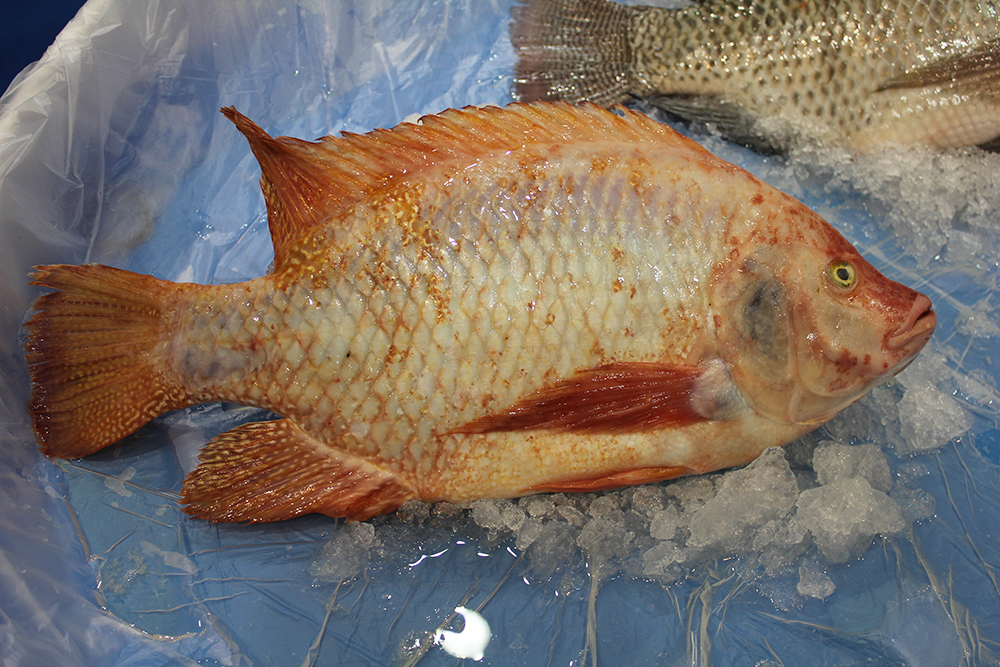
Intelligence
Adding value to tilapia to tap into U.S. market
New markets for tilapia and expansion of existing ones can be created by planning and implementing properly designed geographic strategies to meet discriminating consumer preferences. Low labor costs in most producing countries promotes value-adding by the production of fresh fillets.
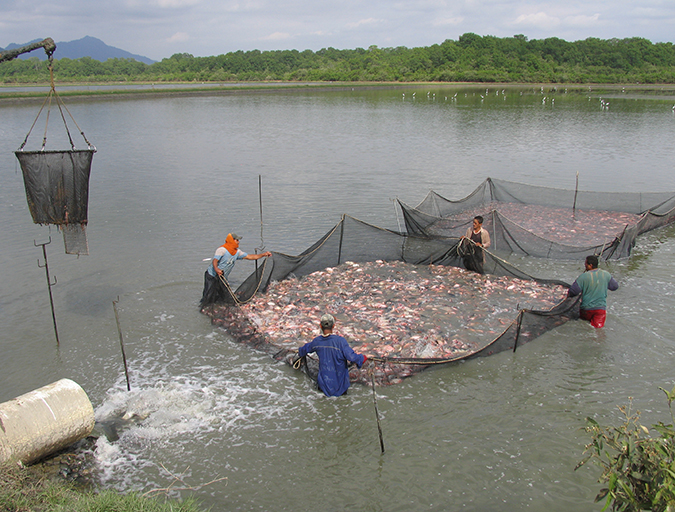
Responsibility
Addressing safety in Latin America’s tilapia supply chain
Over the last decade, the experience gained by many tilapia farmers combined with proficient programs implemented by local governments have significantly improved tilapia production in various Latin American countries like Colombia, Mexico, Ecuador and other important tilapia producers in the region.
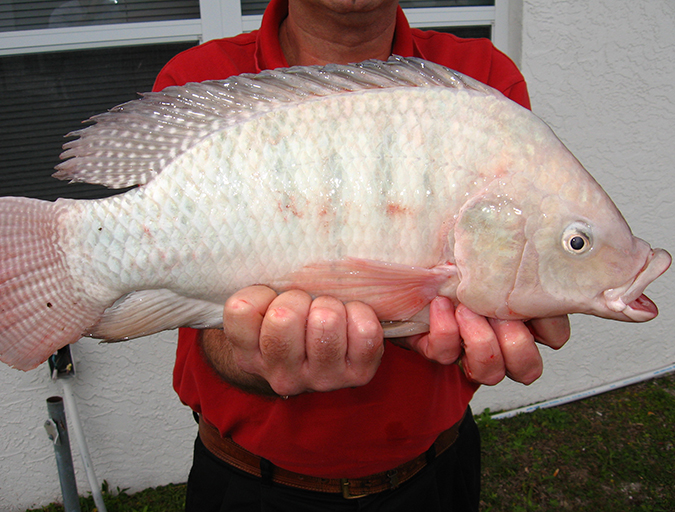
Intelligence
There’s more than one way to grow tilapia
Tilapia aquaculture has expanded significantly in the last 30 years. Production systems range from extensive, low-density and low-technology in small earthen ponds, to semi-intensive systems in larger ponds, to recirculating systems with high densities.
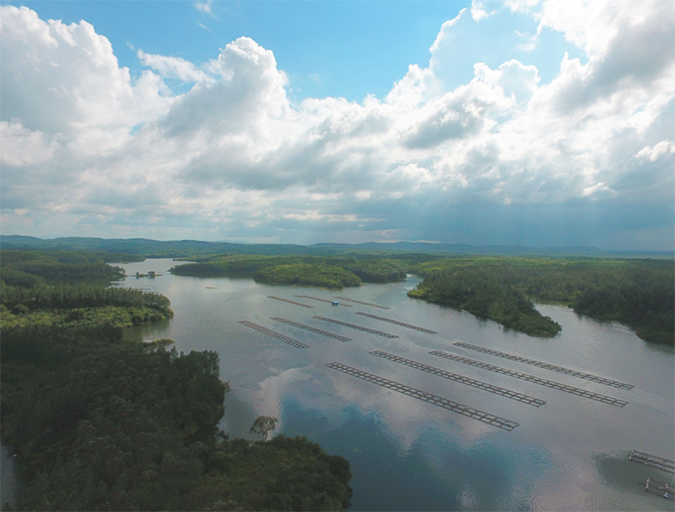
Intelligence
What will it take to make tilapia great again?
Once a darling of the sustainable seafood crowd for its vegetarian diet and potential to feed the world’s growing population, mild-mannered tilapia now has an image problem that may be causing a dip in consumption levels.


